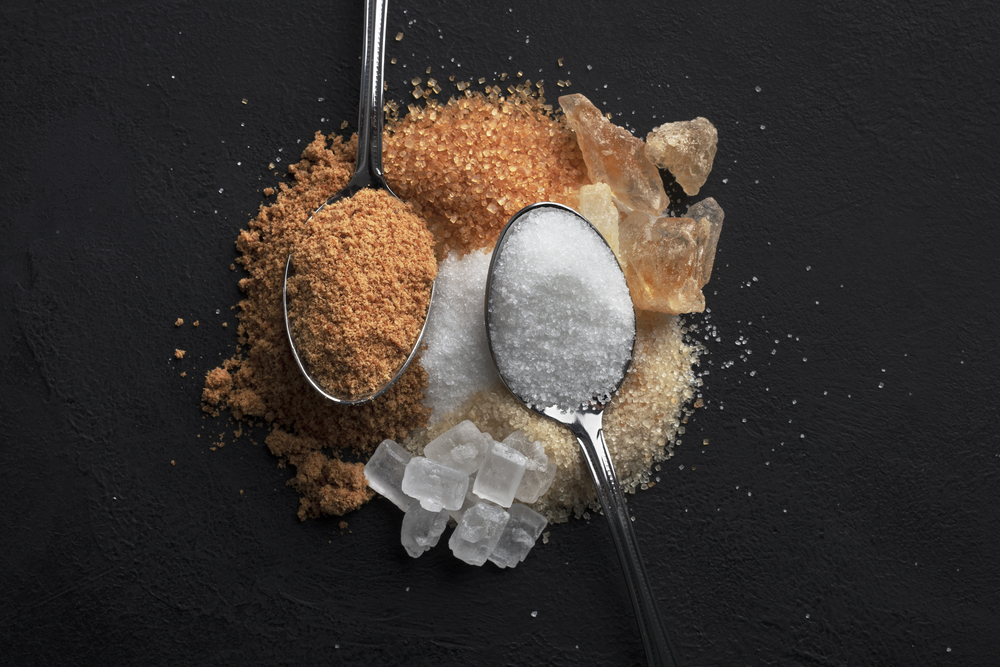Polysaccharides – what are they, where are they found, and what are their properties?

Polysaccharides are complex chemical compounds composed of many residues of simple sugars. They are natural polymers that occur in plants, animals, bacteria, fungi, and algae. The most well-known examples include starch, cellulose, and chitin. These compounds play important biological roles. Apart from being the fundamental building material of living organisms, they also participate in energy storage and support metabolic processes.
What are polysaccharides and what are their most important physicochemical properties? Where are they used? How do they affect the human body? Polysaccharides in food – where can they be found?
Table of Contents
- What Are Polysaccharides, Where Are They Found, And Why Are They So Important For The Body?
- The Most Important Types Of Polysaccharides And Their Biological Functions
- The Use Of Polysaccharides In Medicine, Cosmetics, And Industry
- Properties Of Polysaccharides And Health Benefits For The Body
- Hyaluronic Acid – The Most Valuable Polysaccharide In Cosmetics And Medicine
- Polysaccharides – Natural Support For Health And Wide Possibilities Of Use
What Are Polysaccharides, Where Are They Found, And Why Are They So Important For The Body?
Polysaccharides are complex carbohydrates made up of long chains of monosaccharide units linked by glycosidic bonds. Unlike monosaccharides, disaccharides, and trisaccharides, they do not dissolve in water and do not have a sweet taste. These compounds occur naturally in nature and are an essential element of the plant world. In the human diet, they serve as the main source of energy and dietary fiber, which is necessary for the proper functioning of the digestive system.
The Most Important Types Of Polysaccharides And Their Biological Functions
The group of polysaccharides includes at least 30 different substances of both natural and synthetic origin. Some polysaccharides have no technological or economic value, while others are widely used in the food industry. The most well-known include cellulose, sodium alginate, inulin, gum arabic, and heparin.
Starch – The Primary Energy Reserve Of Plants
One of the main carbohydrates in the human diet is starch. It is an organic compound made of glucose units and is a mixture of amylose and amylopectin. In plants, it serves mainly as an energy storage. Potatoes, cereal grains, and corn cobs are especially rich in starch.
Cellulose – The Natural Building Block Of Cell Walls
Cellulose is a polysaccharide made of D-glucose molecules and is commonly found in the plant world. Its main role is to build cell structures and provide rigidity to plants. In the human diet, cellulose is classified as insoluble fiber, which passes through the digestive system unchanged.
Glycogen – The Body’s Energy Reserve
Another important polysaccharide in living organisms is glycogen. It is stored in muscles and the liver, where it acts as an energy reserve. Since it is the main fuel for working muscles, replenishing its losses is particularly important for athletes and physically active people.
Hyaluronic Acid – A Polysaccharide With Unique Properties
Hyaluronic acid is another crucial polysaccharide, present in almost all living organisms. It has the ability to bind water in the dermis. Thanks to its moisturizing properties, it is a common ingredient in cosmetics that protect the skin from water loss.
The Use Of Polysaccharides In Medicine, Cosmetics, And Industry
Polysaccharides are widely used in the pharmaceutical, food, and technology industries. They are applied in the production of toothpaste, powders, face masks, hemostatic dressings, dietary supplements, as well as various food products. Thanks to their gelling and thickening properties, they are a popular food additive.
Starch is commonly used in the food industry (potato starch), while cellulose is applied in the production of paper, artificial fibers, and adhesives. Hyaluronic acid, on the other hand, is a popular ingredient in cosmetics, serving as a binding and active compound that moisturizes and smooths the skin. Similar to collagen, it is also widely used in aesthetic medicine, especially for filling wrinkles and facial lines.
Properties Of Polysaccharides And Health Benefits For The Body
Polysaccharides are well tolerated by the human body and, what is more, they may also show therapeutic properties. These compounds play a key role in the plant world, mainly serving structural and storage functions. They also have many characteristics that make them useful in medicine. Here are some of them:
- supporting the immune system
- regulating metabolic processes
- improving skin condition
- stimulating the growth of beneficial gut bacteria
- supporting digestive health
Hyaluronic Acid – The Most Valuable Polysaccharide In Cosmetics And Medicine
Among natural polymers valued in cosmetics and various fields of medicine is hyaluronic acid. In the human body, it is found in the largest amounts mainly in connective tissue, in the extracellular matrix, the skin, and the epidermis. This compound not only supports skin hydration and helps improve its elasticity, but also speeds up wound healing and plays an important role in the treatment of joint diseases.
In addition, sodium hyaluronate preparations are used for dry eye syndrome, and in gynecology they help regenerate the mucous membrane and the cervix after childbirth.
Polysaccharides – Natural Support For Health And Wide Possibilities Of Use
Polysaccharides are not just complex sugars, but substances of great biological, health, and industrial importance. Besides serving as a form of energy storage, they play a key role in regulating blood sugar levels, support digestive processes, and have a positive impact on the composition of gut microbiota.
Their role in everyday diet and cosmetics makes them compounds that are truly indispensable in human life.

